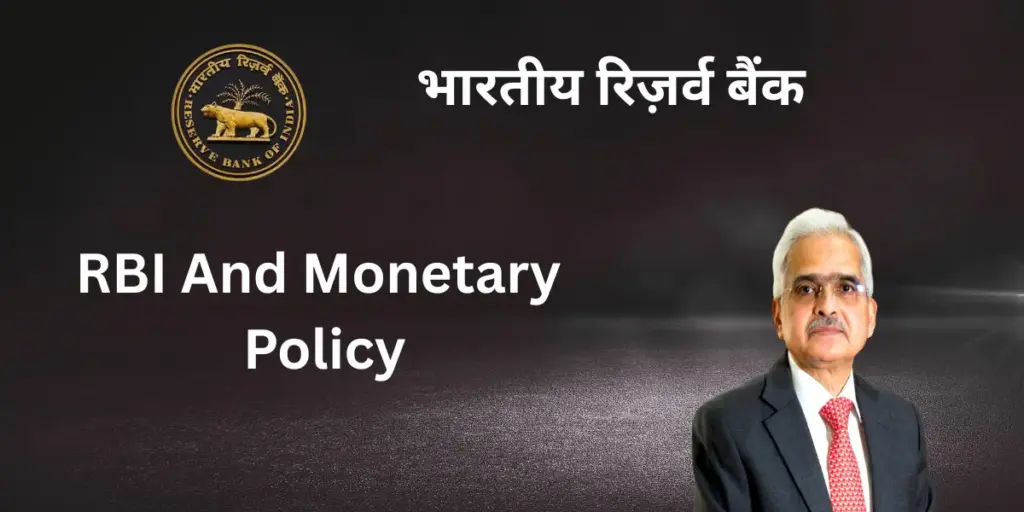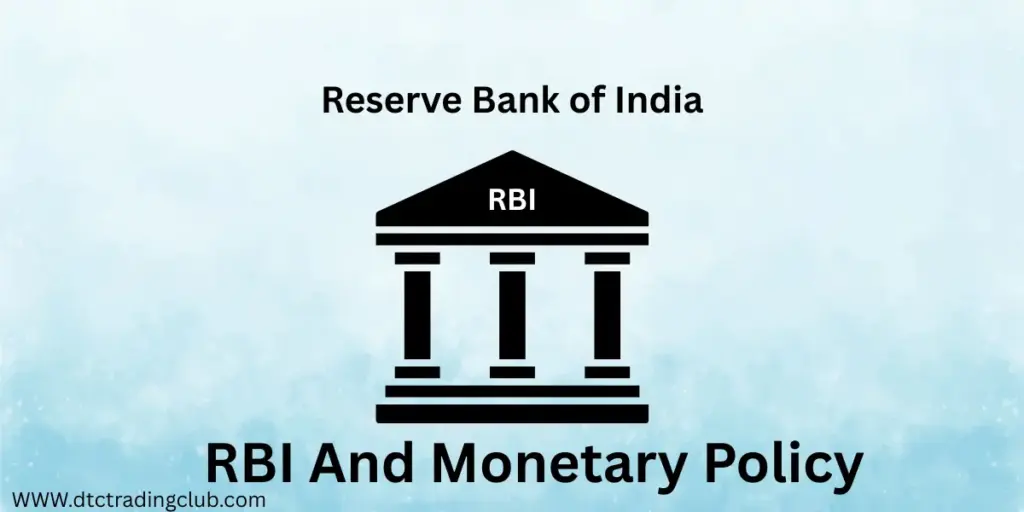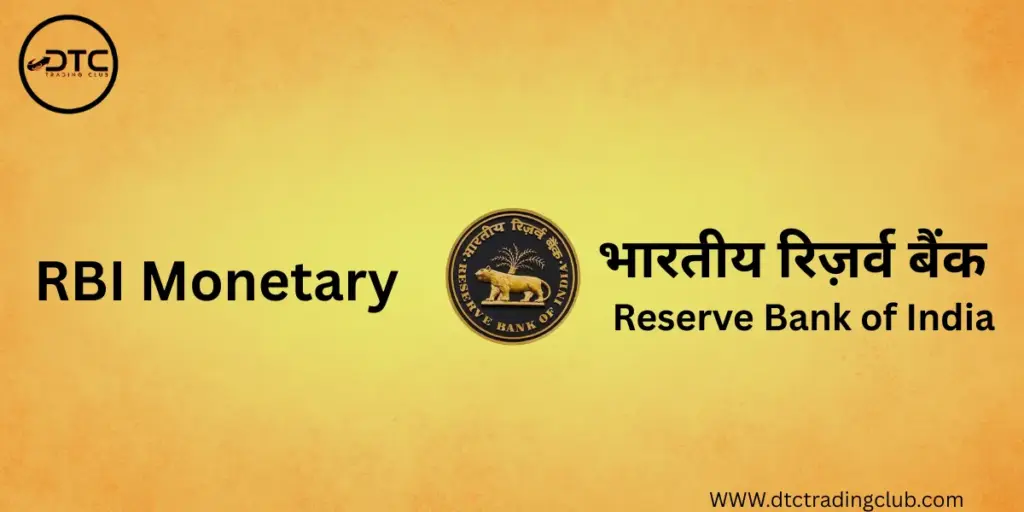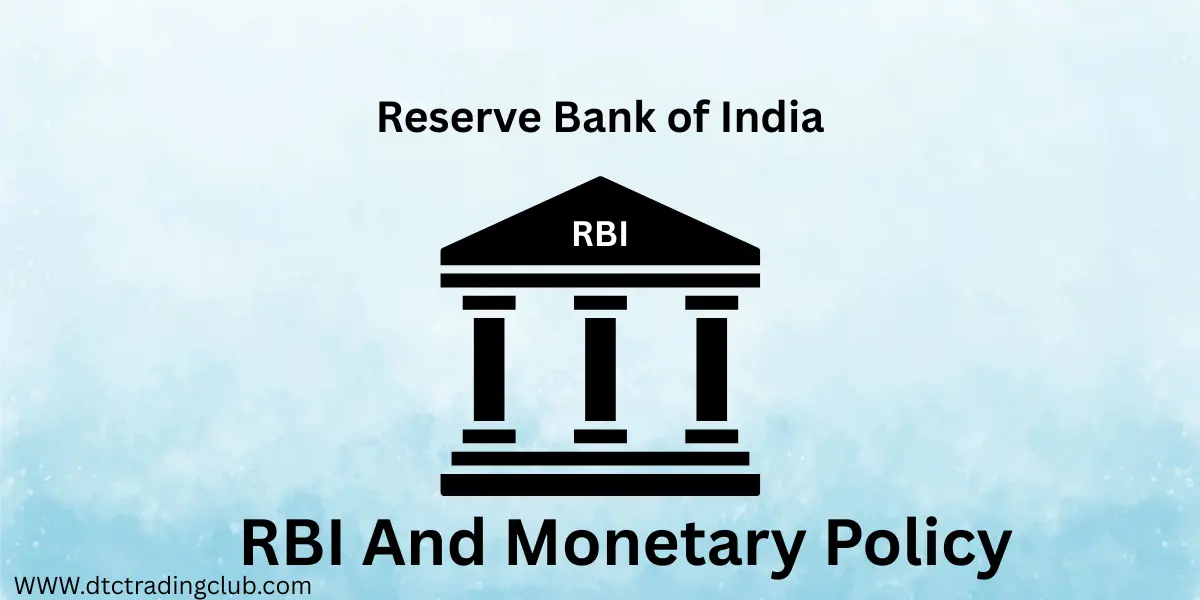Introduction:
The Reserve Bank of India (RBI) isn’t just any bank—it’s the backbone of our economy, quietly working behind the scenes to keep things running smoothly. Through its monetary policy, RBI ensures the Indian economy runs smoothly by balancing inflation, interest rates, and liquidity in the market.
In this blog, we’ll dive deep into the monetary policy of the Reserve Bank of India, explore its impact on the economy, upcoming policy changes, and the next RBI and monetary policy date. If you’re curious about how monetary policy in India works and what it means for your loans, savings, and the economy at large, you’re in the right place.

Table of Contents
1. What Exactly Is Monetary Policy in India?
Monetary policy refers to the tools and strategies the RBI uses to manage money flow, control inflation, stabilize the currency, and encourage growth.
In simple terms:
- When inflation gets too high, the RBI raises interest rates to encourage people to spend less and save more.
- If the economy slows down, RBI cuts interest rates to boost lending and demand.
I This policy is revised every few months by a committee called the Monetary Policy Committee (MPC), which we’ll discuss next.
2. How the Monetary Policy Committee (MPC) Makes Decisions
The MPC is a six-member team that meets every two months to review the economy and decide whether the RBI should change the repo rate (the rate at which the RBI lends money to banks).
Members include:
- RBI Governor (Chairperson)
- Deputy Governor
- One RBI Executive Director
- Three government-nominated economists
They study data like inflation trends, GDP growth, fuel prices, global conditions, and more before making a decision.
3. RBI and Monetary Policy: Next Update Date
The RBI’s next monetary policy meeting is likely to take place from August 4 to 6, 2025, with the policy announcement expected on August 6.
This announcement will provide clarity on:
- Whether interest rates will change
- Inflation control steps
- Future outlook for the Indian economy
Keep an eye on this date if you’re planning big financial decisions like loans or investments.
4. Repo Rate, Reverse Repo Rate, and Why They Matter
- Repo Rate: The rate at which RBI lends to commercial banks.
- If RBI raises this, loans become expensive. If it lowers the rate, loans get cheaper.
- The reverse repo rate is the interest rate the RBI pays to banks when they deposit their money with it.
- Used to control liquidity in the system.
As of now, the repo rate is around 5.50%. This number has a big impact on EMIs, home loans, and credit card interest rates.
5. RBI’s Tools: How Money in India Is Controlled

Monetary policy in India is managed through a few powerful instruments. Here’s a quick look at the main ones:
| Tool | Meaning | Effect |
| Repo Rate | Rate at which RBI lends to banks | Higher repo = costly loans |
| Reverse Repo Rate | Rate RBI gives banks to park funds | Controls liquidity |
| CRR | Percentage of money banks must keep with RBI | Less CRR = more money to lend |
| OMO (Open Market Operations) | Buying/selling government securities | Regulates money supply |
These tools help the RBI maintain a fine balance between inflation and growth.
7 Must-Know Insights on RBI and Monetary Policy

1: The Repo Rate Affects You Directly
If the repo rate falls, loans become cheaper. If it rises, your EMI could go up.
2: Indian Monetary Policy Targets Inflation First
The RBI wants inflation to stay between 2% and 6%. If prices rise sharply, policy gets tighter.
3: RBI Uses Multiple Tools to Stabilize the Rupee
From selling dollars to tweaking interest rates, the RBI works to keep the Indian rupee stable.
4: Liquidity Support Through CRR Cuts
When RBI reduces the CRR, banks have more money to lend—which can boost spending and jobs.
5: RBI Policy Impacts Stock Markets
Lower interest rates often lead to stock market rallies, while tighter policies can cause corrections.
6: Next Policy Meeting = High Expectations
With global uncertainties and domestic inflation under control, the upcoming RBI monetary policy next date (Aug 6, 2025) could bring vital updates.
7: Transparency Is a Big Win for India
Indian monetary policy decisions are explained clearly, and minutes are shared online, building public trust.
Current Scenario: Why RBI Is Cautious in 2025
In early 2025, the RBI lowered interest rates to give the slowing economy a boost. Now, inflation is under control, and the focus has shifted to neutral policy—meaning RBI will watch and respond rather than pre-decide.
This neutral stance is important because:
- It avoids unnecessary rate cuts
- It allows RBI to respond quickly to global shocks (like oil prices or US tariffs)
- It keeps both inflation and growth in check
This approach ensures money in India stays flexible and stable.
monetary policy of reserve bank of india
| If You Are… | RBI Policy Means |
| A Loan Seeker | Your EMI might go down (or up) |
| A Saver | FD rates change based on RBI decisions |
| An Investor | Stock markets react to policy changes |
| A Business Owner | Borrowing costs impact expansion plans |
So yes, RBI and monetary policy are not just technical terms—they’re real forces shaping your financial life.
FAQs:
1. What is the repo rate, and how does it affect inflation?
ANSWER: The repo rate is the interest rate at which the Reserve Bank of India (RBI) lends money to commercial banks. Increasing it makes borrowing more expensive, which helps cool inflation by reducing spending.
2. What is the reverse repo rate, and why does the RBI use it?
ANSWER: The reverse repo rate is the rate at which banks park surplus funds with the RBI. A higher reverse repo provides banks with a safe return and helps absorb excess liquidity from the system.
3. How does changing RBI interest rates impact economic growth?
ANSWER: When inflation is high, raising interest rates slows down demand. Conversely, when growth slows, lowering rates makes borrowing cheaper and stimulates spending and investment.
4. Why does the RBI hold monetary policy meetings, and how often do they occur?
ANSWER: The RBI convenes Monetary Policy Committee (MPC) meetings—typically every two months—to assess economic indicators and set policy rates like repo and reverse repo.
5. What is monetary in India?
ANSWER: Monetary in India refers to the process by which the Reserve Bank of India (RBI) controls the money supply, interest rates, and inflation to ensure price stability and support economic growth. The RBI uses tools like the repo rate, reverse repo rate, and cash reserve ratio (CRR) to manage liquidity and maintain financial stability in the country.
Conclusion
- The monetary policy of the Reserve Bank of India is a powerful tool that controls inflation, credit, and growth.
- The RBI monetary policy next date (August 6, 2025) is crucial for borrowers, investors, and policymakers alike.
- A strong understanding of how money in India works helps individuals and businesses plan better.
- Indian monetary policy is not just about interest rates—it’s about financial stability, future planning, and economic direction.
